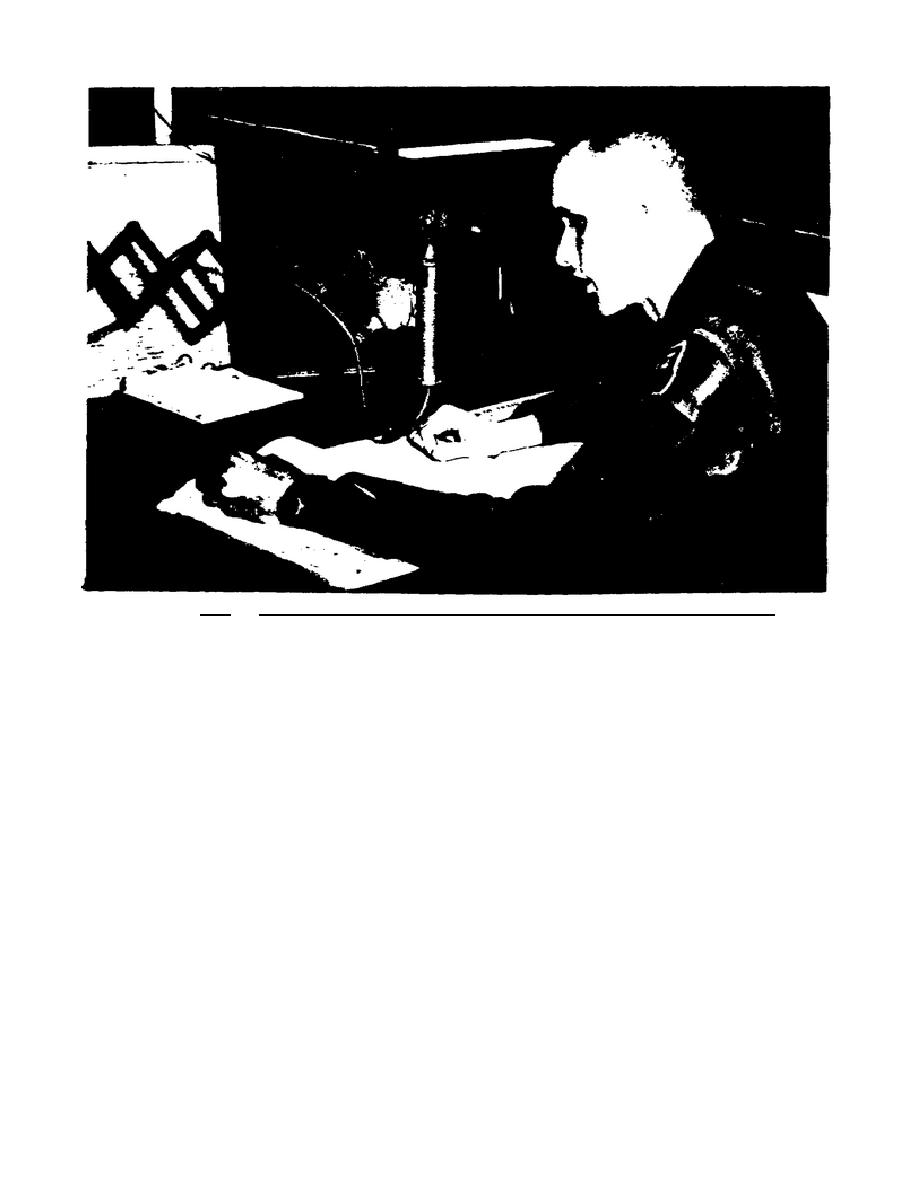
Figure 3.1.
Dispatcher Dictates a Train Order Over His Telephone.
In the dispatcher's office, a foot pedal instead of a button is cut into
the telephone circuit.
The dispatcher depresses the pedal to talk and
releases it to listen.
This gives him free use of both hands.
The
telephone circuit has selective ringing that permits the dispatcher to call
any station individually or all stations simultaneously.
Usually, the
ringing keys are connected with an answer-back signal so that a dispatcher
knows the telephone in the station he is calling is actually ringing. This
assures promptness in answering a dispatcher's telephone--something that is
vital to safe and efficient railroading.
A large part of a dispatcher's work may consist of answering questions
from and furnishing information to workmen along the line. On a division
with high traffic density, a dispatcher's wire is a busy one with
conversations going on almost continually.
Ideally, there will be three
circuits: a dispatcher's circuit used exclusively for the transmission of
train orders, a message circuit used for messages concerning train movement
other than train orders, and a third circuit for messages of a general
nature not directly concerned with train movement.
38



 Previous Page
Previous Page
